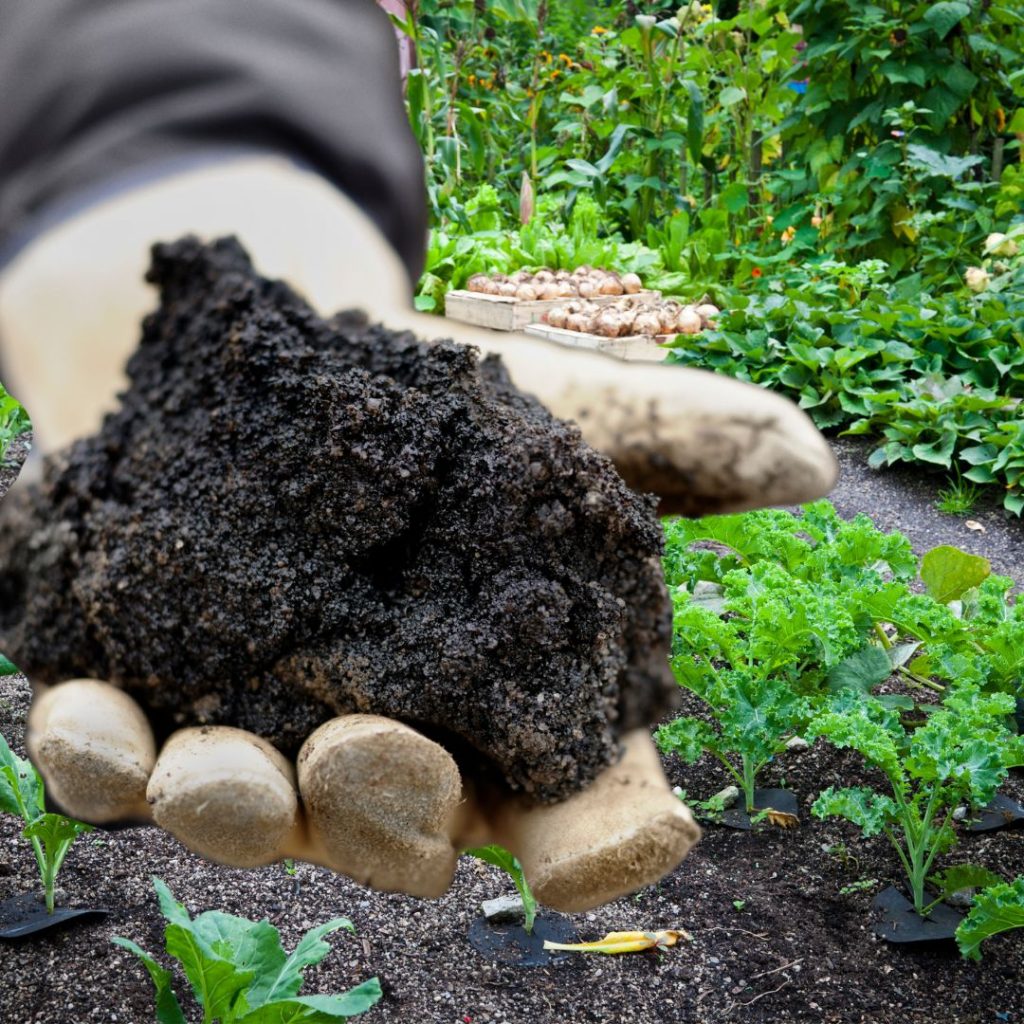With "Wunderwuzzi biochar" to become a climate saver garden on the side

Dear gardening friends, the temperatures of the last few days and weeks have led to an early start to the gardening season. As many of you have heard and read either on our platform or in other media, last year we reached the 1.5 degree Celsius mark that the international community agreed on as the maximum limit worldwide in the 2015 Paris Agreement. This is very worrying because we are on a path that predicts global warming of almost 3 degrees, which would have unimaginable consequences for humanity - unless we act very decisively immediately. " Biochar," writes the IPCC, "could make a significant contribution to mitigating both land degradation andclimate change." The use of biochar in our gardens and on our balconies therefore offers this extremely important benefit, among many others.
Our gardens, our soil and our soils are exposed to more and more stress factors. This is where biochar comes into play. It can be a solution that also has the potential to counteract the climate crisis, as Andreas Jäger, a member of our Scientific Advisory Board, repeatedly emphasizes. There are several videos with him on this topic in our "climate hunters" section. Here you can find the first video from the series "Saving the world with biochar".
What is biochar?
Plants extractCO2 from the airand split it into oxygen O2 and carbon C by means of photosynthesis. They use this to build up their biomass. To prevent theCO2 from escaping back into the atmosphere, it is captured in the plants by pyrolysis (carbonization). Carbonization is a centuries-old principle that has been used both in South America in tropical regions for the production of "terra preta" and in our latitudes for the production of charcoal. Organic material such as wood, plant residues and waste from food production is thermally treated at high temperatures without oxygen. This causes the biomass to carbonize and the carbon remains bound in it - unlike in the case of incineration or decomposition, where it is released again. Pyrolysis is a sustainable, ecological process, provided it is carried out correctly, in which no pollutants are released and pure carbon is produced.
Special properties of biochar
Sponge structure
Biochar has very special properties: Its porous structure makes it an excellent reservoir for microorganisms, water and nutrients. Its surface is like a sponge. This means it can absorb more than three times its weight in water.
Soil improvement
Biochar as a soil conditioner, known as terra preta, has been known since ancient cultures in the Amazon. "With terra preta, the remains of the charred materials were the key to making the otherwise quite infertile soil fertile again in the long term," Gerhard Soja, who researches biochar at the AIT Austrian Institute of Technology and the University of Natural Resources and Life Sciences, Vienna, told DerStandard. "Biochar is more beneficial to soils that are degraded or less able to retain nutrients," says Dominic Woolf from Cornell University in the US.
Charged versus uncharged biochar
Each gram of biochar has a surface area of around 300m2! So you have to be careful: The direct application of biochar to the soil can lead to negative effects, as the charcoal must first "charge" itself with nutrients and microbiology.
Uncharged biochar can be used for the absorption of substances
- in the binding of odors in connection with manure, for example.
- Or if you want to create lean meadows and want to reduce the existing fat meadow. Unloaded biochar can be used to specifically remove nutrients from the soil.
- Uncharged biochar can also be used to bind pollutants in soils
Charged biochar for use in gardens
Only when the charcoal is saturated can it develop its positive effect in the horticultural sector. For this reason, biochar should always be used together with organic fertilizer. The natives of Brazil, for example, mixed it with manure. We gardeners usually have our own miracle weapon: compost. If you enrich the biochar with it, this substrate stores nutrients and microorganisms can colonize. Many people enrich the compost with biochar at the compost heap, as this also speeds up the conversion process.
When keeping chickens
For animals, uncharged biochar can be added to the feed. This helps to bind harmful substances and bacteria in the intestines, promotes the health and well-being of the animals and strengthens their immune system.
The advantages of biochar
- Long-term nutrient store
- improves the water absorption and storage capacity of the soil
- Stores CO2 in the soil for the long term
- Improves the soil quality
- accelerates humus formation
- Stabilizes the pH value
- promotes microbial life
- improves the health of plants and increases their resistance
- has a positive effect that lasts for many years because biochar weathers very slowly or not at all
Making biochar yourself
We haven't tried it ourselves yet - it's still on our to-do list - but you should be able to make it yourself quite easily using an earth or steel con-tiki. This is a conical container in which dry residues can be charred by continuously placing thin layers on a starting fire.
You can find lots of information on the internet. There is also the Fachverband Pflanzenkohle e.V. (efvpk.d) and the Ithaka-Institut (ithaka-institut.org), where you can get information.
The many advantages of biochar have convinced us and this year we will actively work with charged biochar in our beds and with uncharged biochar in the compost heap and are already very excited about the results, which we will of course share with you here! Your #Beetschwestern






